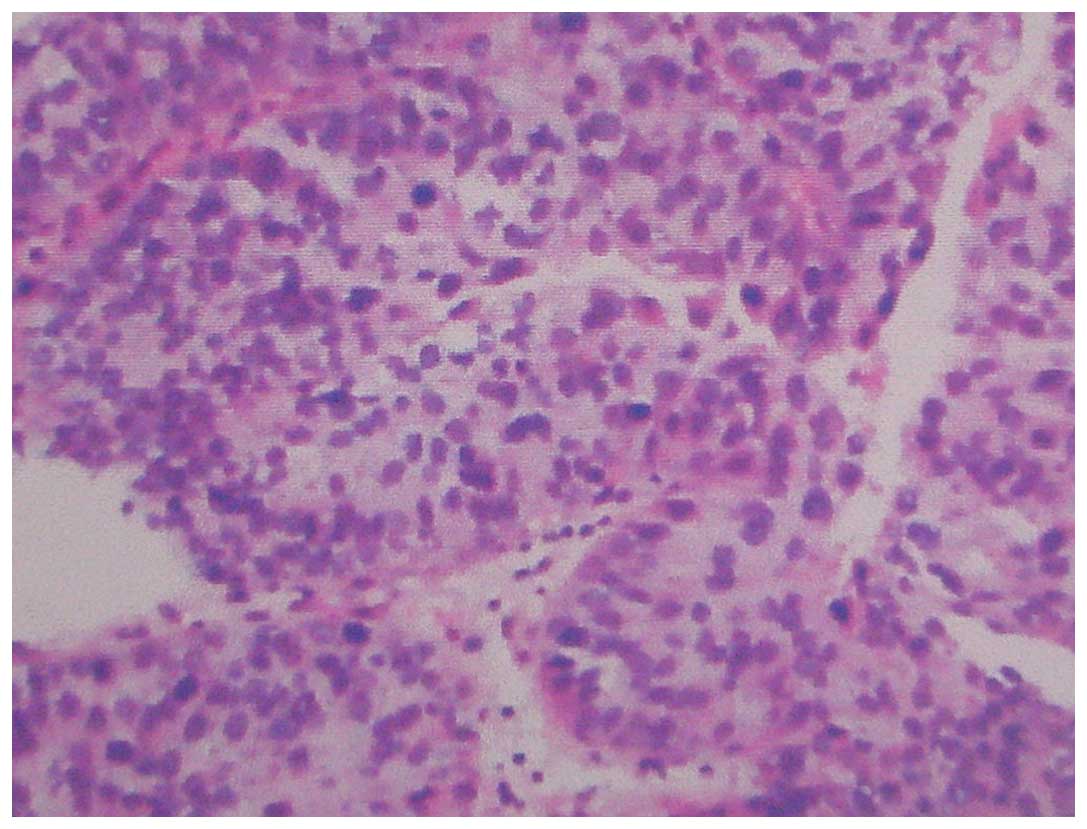Primary carcinoma of the ureteral stump following radical nephrectomy for renal cell carcinoma: A case report and literature review
- Authors:
- Published online on: April 7, 2016 https://doi.org/10.3892/ol.2016.4426
- Pages: 3324-3326
-
Copyright: © Jin et al. This is an open access article distributed under the terms of Creative Commons Attribution License.
Metrics: Total
Views: 0 (Spandidos Publications: | PMC Statistics: )
Total PDF Downloads: 0 (Spandidos Publications: | PMC Statistics: )
Abstract
The occurrence of primary carcinoma of the ureteral stump following radical nephrectomy for renal cell carcinoma is extremely rare; 7 patients with the disease have been reported previously. All these patients were males with transitional cell carcinoma. The current study reports the case of a 61‑year‑old woman, who presented with gross hematuria following a radical nephrectomy for local clear cell renal carcinoma. A computed tomography scan revealed the presence of a mass on the ureteral stump. The patient underwent a left ureteral stump and bladder cuff excision. The histological diagnosis was high‑grade transitional cell carcinoma of the ureteral stump, with focal interstitial cancer cell infiltrates. There was no evidence of recurrence during a follow‑up period of 35 months. In addition, the present study reviewed the literature for previous patients with ureteral stump carcinoma following a radical nephrectomy for renal cell carcinoma; 7 previous patients with the disease were identified. The present study suggests that, if patients who have previously undergone a radical nephrectomy for renal cell carcinoma present with hematuria, the possibility of ureteral stump carcinoma should be considered, particularly in East Asian countries. The existence or a history of bladder carcinoma should be considered as a high‑risk factor for developing ureteral stump carcinoma. A ureteral stump and bladder cuff excision should be performed once ureteral stump carcinoma is diagnosed.












